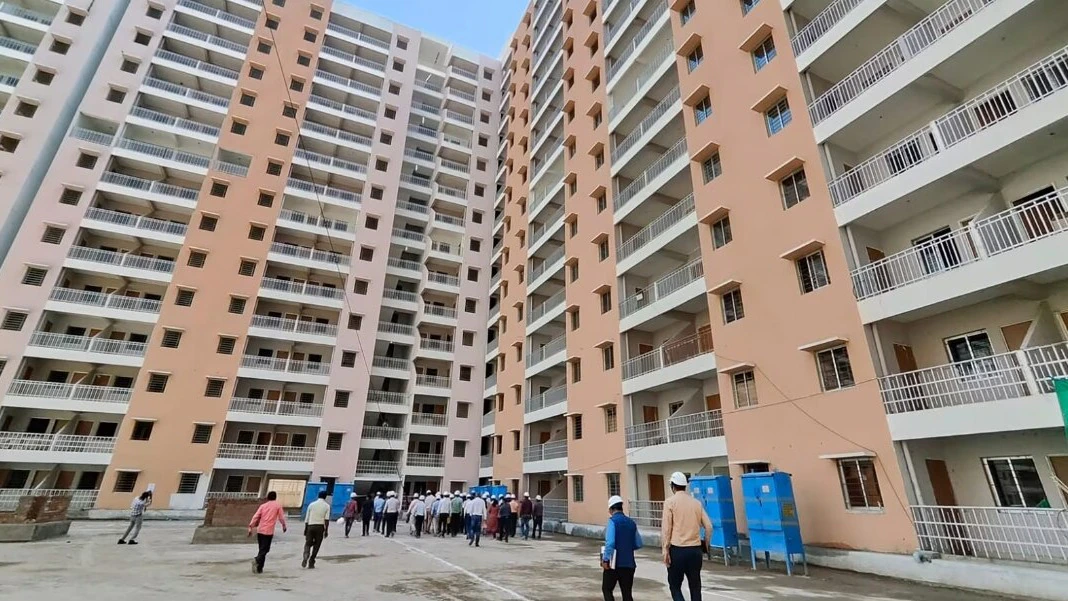Table of Content
Commercial lease agreements in India are complex legal documents that outline the terms between landlords and tenants for leasing commercial properties. For both parties, it is essential to thoroughly understand the lease terms to avoid potential disputes and ensure a smooth leasing experience. In this detailed guide, we’ll explore the key clauses in commercial lease agreements, common pitfalls to watch out for, and how to negotiate favorable terms.
This guide will cover:
- Importance of Commercial Lease Agreements
- Key Clauses in Commercial Lease Agreements
- Common Pitfalls in Commercial Lease Agreements
- Negotiating Favorable Lease Terms
- Conclusion
Importance of Commercial Lease Agreements
A commercial lease agreement is the legal foundation for the use of a property for business purposes. It defines the rights and responsibilities of both the landlord and the tenant, ensuring clear communication and minimizing misunderstandings.
Key points about the importance of commercial lease agreements:
- Legal Protection: Both the landlord and tenant are protected under the law, reducing the risk of disputes.
- Clear Terms: The agreement clearly outlines payment terms, property usage, maintenance responsibilities, etc.
- Dispute Resolution: In case of any disputes, a written lease agreement helps settle disagreements through the legal framework.
Key Clauses in Commercial Lease Agreements
Here are the essential clauses to look out for when signing a commercial lease in India:
- Lease Term and Renewal Options
The lease term defines how long the tenant can occupy the premises. Renewal options should be clearly laid out, providing tenants with the opportunity to extend their stay if necessary. Look for automatic renewal clauses, and ensure they align with your business goals.
Example:
- Lease Term: 3 years, starting from January 1, 2024
- Renewal: Option to renew for an additional 3 years with 6 months' prior notice.
- Rent and Escalation Clause
Rent is typically paid monthly, quarterly, or yearly, and should be stated explicitly. Also, an escalation clause details the percentage by which rent will increase during the lease term.
Example Table for Rent and Escalation:
|
Lease Year |
Monthly Rent |
Escalation % |
|
2024 |
₹1,00,000 |
0% |
|
2025 |
₹1,05,000 |
5% |
|
2026 |
₹1,10,250 |
5% |
- Security Deposit
A security deposit is typically required to safeguard the landlord in case of property damage or unpaid rent. The amount should be negotiated and clearly mentioned.
Standard Terms:
- Security Deposit: ₹5,00,000 (equivalent to 6 months’ rent)
- Maintenance and Repair Obligations
Clarify who is responsible for the upkeep of the property. This clause can be divided into two parts: - Structural Repairs: Often the responsibility of the landlord.
- Non-structural Repairs: Typically the responsibility of the tenant.
- Permitted Use of the Premises
The lease should explicitly define what the property can be used for. Any unauthorized use could result in a violation of the lease agreement.
Also Read: How can AI help design sustainable offices?
Example:
- Permitted Use: Office Space
- Prohibited Use: Storage facility, industrial use
- Subleasing and Assignment
If the tenant wishes to sublease or transfer their lease to another party, this clause must be addressed in the agreement.
Subleasing: Permission required from the landlord in writing.
- Termination and Exit Clause
Both parties must have the right to terminate the lease under specific conditions, such as breach of contract, non-payment, or legal violations.
Standard Termination Period: 3 months’ notice from either party.
- Force Majeure
This clause protects both parties in case of unforeseeable events such as natural disasters or pandemics that could prevent the fulfillment of the lease.
Example:
- Force Majeure includes events like earthquakes, floods, pandemics, etc.
Common Pitfalls in Commercial Lease Agreements
When reviewing a lease agreement, it's crucial to be aware of common pitfalls that could result in problems down the line:
- Unclear Rent Escalation Terms
Vague or unspecified rent escalation clauses can lead to sudden and unexpected rent increases. Ensure the percentage and time intervals for rent hikes are clearly defined. - Hidden Charges
Some landlords may include hidden charges, such as maintenance fees or service charges, that are not clearly disclosed upfront. Always ask for a complete breakdown of all costs. - Ambiguities in Maintenance Responsibilities
Lack of clarity on who is responsible for repairs and maintenance can lead to disputes. Ensure this is clearly stated in the contract. - No Exit Clause
Not including a well-defined exit clause can leave tenants stuck in long-term leases with no option to terminate the agreement without hefty penalties.
Negotiating Favorable Lease Terms
Negotiation is key when entering a commercial lease agreement. Here are some tips to negotiate terms that benefit your business:
- Negotiate Rent-Free Periods
For businesses setting up a new office or retail space, negotiating a rent-free period for the initial months can provide financial relief during the setup phase. - Limit Rent Escalation
Try to negotiate rent escalation to a reasonable percentage, especially if you’re committing to a long-term lease. A lower escalation rate can save you money over time. - Cap on Service Charges
If the lease includes service or maintenance charges, negotiate a cap to avoid future hikes. Ensure you are only paying for essential services. - Right to Sublease
If you foresee the need to sublease, negotiate a flexible sublease clause. This can allow you to mitigate losses if your business has to downsize or relocate. - Renewal Terms
Always include the option to renew the lease. Ensure that the renewal terms, especially the rent, are clearly defined to avoid sharp increases later. - Exit Clause
Ensure that there is a mutually agreed exit clause in place that allows you to terminate the lease if necessary, without excessive penalties.
Conclusion
Understanding the key clauses in a commercial lease agreement is crucial for both landlords and tenants. It ensures clarity and prevents potential disputes. By being aware of common pitfalls and negotiating favorable terms, you can enter into a lease agreement that protects your interests and sets the foundation for a successful business venture.
Also Read: Can a tenant claim ownership of a commercial property?










Ans 1. A commercial lease agreement is a legally binding document that outlines the terms under which a tenant rents commercial property from a landlord.
Ans 2. A security deposit is an upfront payment made by the tenant to protect the landlord against damages or unpaid rent.
Ans 3. Yes, but early termination should be governed by an exit clause in the lease agreement, which may include penalties or notice periods.
Ans 4. A rent escalation clause defines the percentage increase in rent over the lease term, usually to account for inflation or market changes.
Ans 5. Subleasing refers to the tenant leasing part or all of the leased property to another party, subject to the terms of the lease agreement.